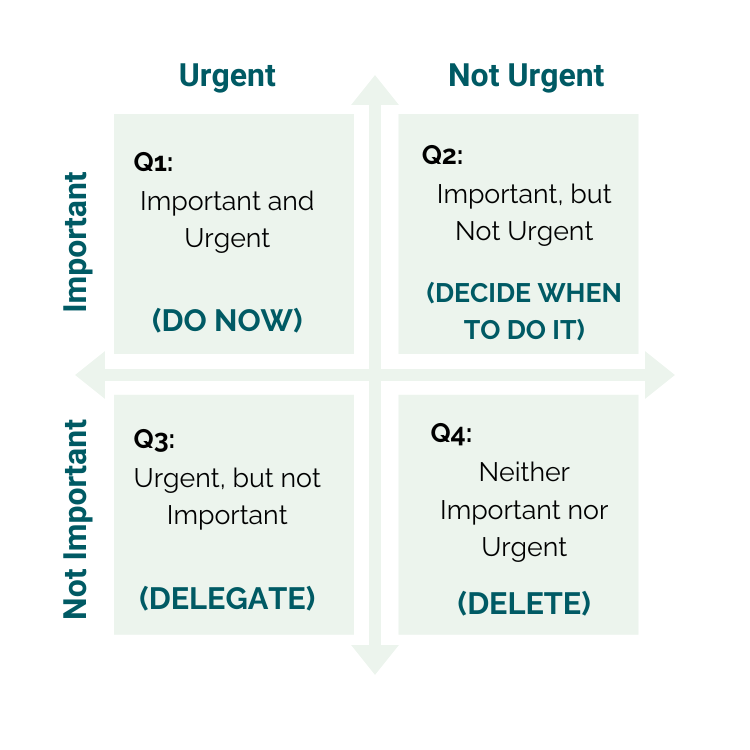roductivity is essential to key work outcomes such as business growth, desired results, high achievement, and a sense of fulfillment. However, too much productivity can begin to erode the very benefits we come to associate with being diligent and hardworking. When your mindset about work evolves into needing to constantly "do" and "be on", it can lead to adopting poor practices (inside and outside of work) and result in adverse, long-term consequences.
As a society, and at the individual level, we may endorse the wrong mental model of what an ideal worker is: comes in early, works through lunch, is always responsive to emails and text messages (no matter the time), stays late, is always busy, and consistently puts work first.
Reimagining and resetting our expectations and norms around productivity could better serve all from every level of the organization, down to the individual contributor.
The problems
Toxic productivity is best described as overworking at the expense of other (or all other) facets of life.
In organizations, we continue to reward and praise those who engage in behaviors that would qualify as toxic productivity. What's more, overworking can be viewed or celebrated as a badge of honor earned by the most elite.
Did you know:
- 80% of employees send work emails on weekends
- 50% have checked email after 11PM
- 60% of employees send work emails while on vacation
- The average employee works well beyond their 40 hours/week (i.e., 52+ hours)
Leaders often struggle to decline tasks that deviate from their primary duties, setting a precedent that team members find challenging to emulate. For many, personal identity becomes entwined with professional roles, leaving them vulnerable to toxic productivity if unable to detach from this belief.
Despite organizations listing work-life harmony and employee well-being as core values, many struggle to consistently uphold these principles.
How did we get here?
Humans naturally equate business with impact, mistakenly assuming that increased activity equates to greater efficacy. In reality, toxic productivity interferes with productivity and disrupts healthy relationships and support systems.
Within large organizations, employees strive to distinguish themselves among peers, leading to unhealthy competition and the promotion of toxic productivity to achieve career goals.
Advancements in technology also erode work-life boundaries, fostering the societal belief that constant accessibility is both attainable and necessary.
Recognizing the Symptoms: Are You Trapped in Toxic Productivity?
Review the signs and symptoms of toxic productivity listed below. On any given week, how many would you endorse as being true for you:
- Feel you can't rest.
- Experience guilt/shame when you take personal downtime.
- Can't fully turn your mind off of work-related things, even when off-the-clock.
- Experience anxiety or worry (i.e., preoccupation) about what else you "should" do (or be doing).
- Feel compelled to prove you are always working or available.
- Your close relationships have negatively noted your relationship with work (e.g., called you a workaholic).
- Your day consists of putting out "fires" until the end of the day where you have a sinking feeling and realization that you haven't yet started your most important work.
Strategies to combat toxic productivity
Strategy #1: Build time and break buffers
Providing yourself with realistic timeframes to complete tasks and adequately recovering from energy-depleting activities can aid in avoiding burning yourself out, while simultaneously increasing your productivity.
1. Pad your Calendar
- Instead of running from one meeting to the next, or from task-to-task, add 10 - to 15-minutes of buffer time before and after to allow time to decompress and prepare for what's ahead. In addition, consider capping the meetings you lead at 45 or 50 minutes, rather than the typical 60 minutes.
2. Add blocks for slack
- Humans are notoriously poor estimators of how much time and effort is required to accomplish things. Therefore, we tend to underestimate when and overpromise what we can deliver. Understand work emergencies and unexpected demands will pop up; therefore, booking yourself near or at 100% capacity will ensure you will overwork.
Where to start: Intentionally create slack into your calendars each week. Block off and protect meaningful chunks of time where you can finish up work that was delayed or took longer than expected to complete.
Strategy #2: Increase workload transparency
Often, we are unaware of just how much work we are engaged in, let alone how much work others around us are completing. Increasing transparency around what everyone is doing can help to make more well-informed, thorough, and purposeful decisions that impact the health and effectiveness of productivity.
1. View nothing as cost free
Consider everything we engage in at work not as cost free, but rather a values trade-off.
Ask yourself the following before scheduling yourself and others, and before accepting work:
- What am I not doing because I'm doing this thing?
- What is everyone not doing because they're at this meeting, or doing this thing?
- Is this meeting/thing a better use of my time? Others' time?
2. Audit meetings
Auditing meetings and other work tasks to check for effectiveness can highlight areas to gain more insight and transparency into the scope of work you and others are entering in to. For example, if you discover meetings or assignments don't have agendas, do not adhere to time limits, fail to produce action items, etc., then consider making changes or concentrating your time and efforts in more fruitful areas/work.
Strategy #3: Prioritize important and urgent
Across a day, it can be easy to go from one urgent task to another. Caught up in the current, we may end up focusing on other people's priorities and downplaying our own.
Realizing what's important is not always synonymous with what's urgent is an important step in reducing toxic productivity.
1. Identify and pursue true priorities
Use a tool, such as the Eisenhower Matrix, to more effectively prioritize your tasks and responsibilities.
Where to start:
 STEP 1: Create and label a matrix with four quadrants
STEP 1: Create and label a matrix with four quadrants- STEP 2: Fill in each quadrant with tasks and assignments that meet the criteria.
- STEP 3: Anything in Q1 is your top priority - attend to these items first. Followed by making time each day for something from Q2. Quadrants 3 and 4 should be delegated, deleted, or attended to last.
Strategy #4: Practice detachment and setting boundaries
Habit Formation
To take a deeper dive on habit formation, check out The Power of Habit by Charles Duhigg and Atomic Habits by James Clear.
Understanding that our core identities and worth are not reserved for only what we do professionally and who we are at work can be challenging. Particularly in fields such as healthcare where purpose and desire for the work and mission is deeply intertwined with personal character, values, and passion. Learning to professionally detach and find ways to draw healthy parameters around how we operate in and out of work can ultimately play a major role in bringing a higher quality of ourselves to the work that we do and love.
1. Determine a “Shutoff” cue
Humans are consciously and unconsciously sensitive to environmental cues. Cues play a major role in habit formation. Simply put, habits are formed over time when a cue is experienced and it triggers us to engage in a particular routine or behavior (i.e., the habit) that we're ultimately rewarded for (i.e., reinforcement).
Where to start:
- Determine a reliable, environmental cue that could serve as your signal to stop working. This could be a certain time of the day, when your spouse or children come home, or when something else scheduled begins (i.e., gym class).
- When the determined cue arrives, adhere to it and completely halt work until the next day.
- Take note of the physical, mental, emotional, and interpersonal rewards you experience when you practice detaching and honor your boundaries.
Toxic productivity undermines the very essence of productivity, eroding well-being and hindering success. By acknowledging its symptoms, origins, and implementing strategies to combat it, individuals and organizations can pave the way for a healthier, more sustainable approach to work and life.
Embracing a balanced mindset towards productivity will not only bolster effectiveness but also foster a more fulfilled, thriving workforce.
Jessica Burgett
Negative self-talk lurks as a formidable threat, silently undermining our confidence and stifling our potential. Recognizing its dangers, Leadership Training Specialist Jess Burgett equips us with essential strategies to combat unhelpful internal dialogues, turning our thoughts into powerful allies for a more positive and successful life.
The Shared Governance Support Team has developed a list of resources for new shared governance leaders to equip them to lead and guide team members in engaging in shared decision-making at the local level.
For many of us, focusing only on the positive—at the expense of experiencing a negative emotion—has been taught and expected. But why not adapt and learn from something so unique as an authentic human emotion? Chief Human Resources Officer Christian Sherwood shares learning from psychologist Susan David.
